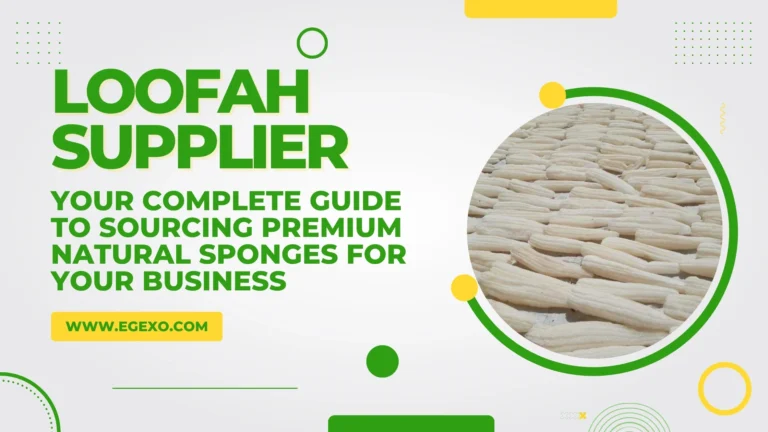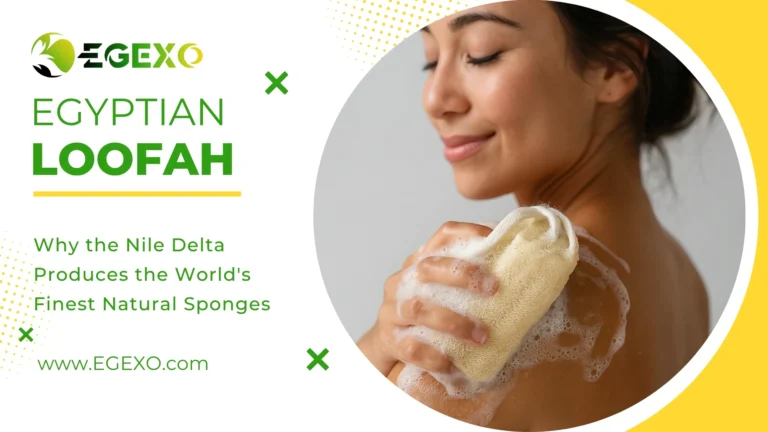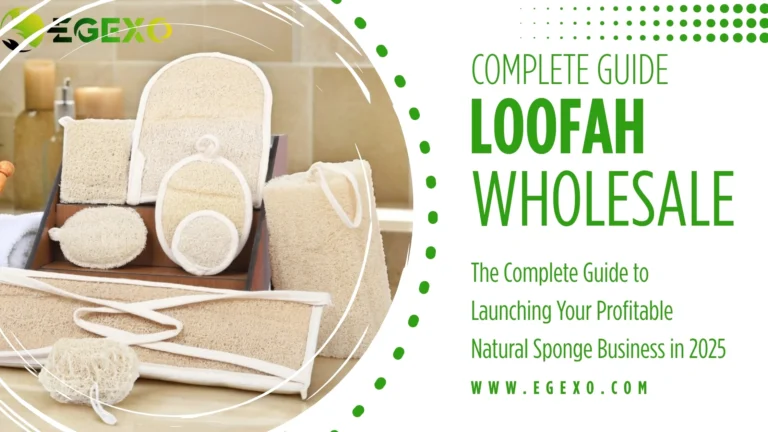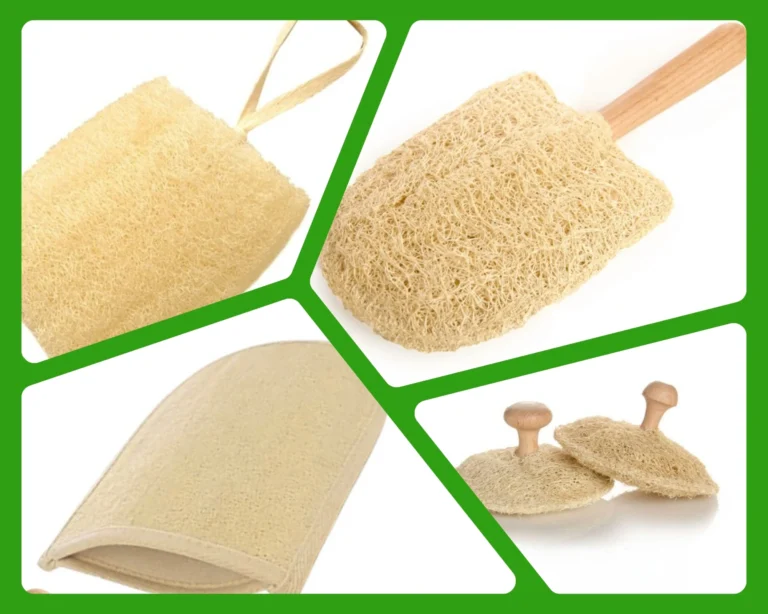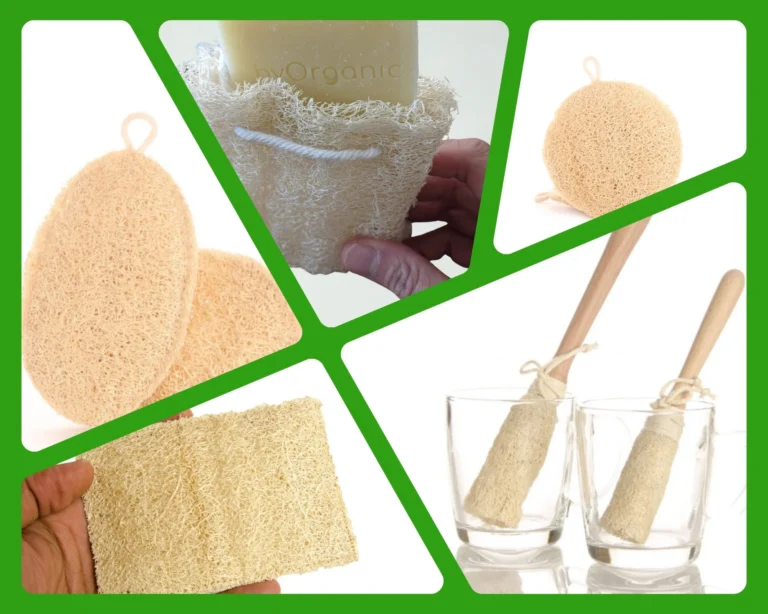What is the Purpose of a Loofah in a Shower? The Complete Guide to Natural Exfoliation
Picture this: you step into your morning shower, reach for that familiar, fibrous natural sponge hanging on your shower caddy, and begin your daily ritual of cleansing and rejuvenation. That humble loofah sponge in your hand represents thousands of years of natural skincare wisdom, transforming an ordinary shower into a spa-like experience of exfoliation and renewal.
The purpose of a loofah in a shower extends far beyond simple cleaning – it’s your gateway to healthier, more radiant skin through gentle yet effective natural exfoliation. Whether you’re a wellness enthusiast, a business owner exploring natural product opportunities, or someone simply curious about upgrading their shower routine, understanding the true purpose and benefits of Egyptian loofah sponges will revolutionize how you think about daily skincare.
What Exactly is a Loofah Sponge?
Before diving into its shower purposes, let’s clarify what we’re discussing. A natural loofah (also spelled luffa) is the dried, fibrous interior of the Luffa aegyptiaca plant, a member of the cucumber family. Unlike synthetic alternatives, these exfoliating sponges are 100% natural, biodegradable, and have been used for centuries across Mediterranean and Middle Eastern cultures.
The transformation from vine to shower essential is remarkable: fresh luffa fruits are harvested, dried, and processed to reveal the intricate network of natural fibers that create the perfect texture for skin exfoliation. This process, particularly when done with premium Egyptian loofah, results in a durable, effective natural sponge that serves multiple purposes in your daily shower routine.
The Primary Purpose: Natural Exfoliation for Healthier Skin
Why Does Your Skin Need Exfoliation?
Your skin naturally sheds approximately 30,000 to 40,000 dead skin cells every day. Without proper exfoliation, these cells accumulate on your skin’s surface, creating a dull, rough appearance and potentially clogging pores. This is where the loofah’s primary purpose shines – providing gentle mechanical exfoliation that removes this cellular buildup.
Dr. Sarah Martinez, a dermatologist with over 15 years of experience, explains: “Natural loofahs offer the ideal balance of texture for effective exfoliation without the harshness of synthetic alternatives. The irregular fiber pattern creates multiple contact points that help slough away dead skin cells while stimulating circulation.”
How Loofahs Transform Your Shower Experience
When you use a luffa sponge in your shower, you’re engaging in a multi-layered skincare process:
Mechanical Exfoliation: The natural fibers physically remove dead skin cells, revealing the fresh, healthy skin beneath. This process is gentler than salt scrubs or harsh synthetic exfoliants while being more effective than washcloths alone.
Circulation Enhancement: The massaging action of the loofah against your skin stimulates blood flow to the surface, promoting cellular renewal and giving your skin a healthy, natural glow.
Deep Cleansing: The porous structure of natural loofah creates rich, luxurious lather while ensuring thorough cleansing that reaches beyond surface-level dirt and oils.
What Are the Specific Benefits of Using a Loofah in Your Shower?
Immediate Skin Benefits
The moment you incorporate a natural loofah into your shower routine, you’ll notice several immediate benefits:
Smoother Skin Texture: Regular exfoliation with an Egyptian loofah removes the rough, flaky patches that can make skin feel coarse or bumpy. Users often report noticeably smoother skin after just one use.
Enhanced Product Absorption: By removing the barrier of dead skin cells, your moisturizers, serums, and other skincare products can penetrate more effectively, maximizing their benefits.
Natural Glow: The circulation boost from loofah massage brings fresh blood to the skin’s surface, creating that coveted healthy glow that no highlighter can replicate.
Long-term Skin Health Advantages
Consistent use of a natural loofah sponge provides cumulative benefits that transform your skin over time:
Reduced Ingrown Hairs: For those who shave, regular exfoliation with a loofah helps prevent ingrown hairs by keeping follicles clear and encouraging proper hair growth direction.
Even Skin Tone: By promoting cellular turnover, loofah exfoliation can help minimize the appearance of dark spots, minor discoloration, and uneven skin tone over time.
Improved Skin Resilience: Regular, gentle exfoliation encourages your skin’s natural renewal process, potentially leading to improved elasticity and overall skin health.
How Should You Use a Loofah in the Shower for Maximum Benefits?
The Proper Technique
Using a loofah effectively requires the right approach to maximize benefits while avoiding irritation:
- Preparation: Start your shower with warm (not hot) water to open pores and soften skin. Wet your natural loofah thoroughly until it becomes pliable.
- Product Application: Apply your favorite body wash or soap to the damp loofah. Natural loofahs create exceptional lather, so you’ll need less product than usual.
- Gentle Circular Motions: Begin with light pressure, using circular motions to massage the loofah across your skin. Start with less sensitive areas like arms and legs before moving to more delicate areas.
- Duration and Frequency: Limit loofah use to 2-3 times per week for most skin types. Over-exfoliation can lead to irritation and sensitivity.
- Rinse and Moisturize: Always rinse thoroughly and follow with a quality moisturizer while skin is still damp to lock in hydration.
Common Mistakes to Avoid
Many people unknowingly reduce their loofah’s effectiveness through improper use:
- Using excessive pressure: Natural loofahs are effective with gentle pressure; aggressive scrubbing can cause micro-tears and irritation
- Neglecting hygiene: Failing to properly rinse and dry your loofah after each use can lead to bacterial growth
- Using on sensitive areas: Avoid using loofahs on facial skin, recent wounds, or areas with active breakouts
Are There Different Types of Loofahs for Different Shower Purposes?
Understanding loofah varieties helps you choose the right option for your specific needs and skin type:
Egyptian Loofah: The Gold Standard
Egyptian loofah represents the premium tier of natural exfoliating sponges. Grown in the ideal climate conditions of Egypt’s Nile Delta region, these luffa sponges offer superior durability, perfect texture balance, and exceptional longevity. The consistent quality makes Egyptian loofah the preferred choice for both personal use and commercial applications.
Raw Loofah Scrubbers vs. Processed Options
Raw loofah scrubbers offer maximum customization potential. These unprocessed natural sponges can be cut to specific sizes, shaped for particular uses, or incorporated into custom products. For businesses exploring private labeling opportunities, raw loofahs provide the foundation for creating unique bath and body loofah products.
Specialty Applications Beyond Body Care
Modern loofah applications extend far beyond shower use:
- Kitchen Applications: Kitchen and household loofah products provide eco-friendly alternatives to synthetic scrubbers for dish and surface cleaning
- Pet Grooming: Loofah pet and spa grooming products offer gentle exfoliation for pet bathing and grooming routines
What Should Business Owners Know About Loofah Market Opportunities?
Growing Demand for Natural Products
The global natural sponge market is experiencing unprecedented growth, driven by increasing consumer awareness of sustainable, eco-friendly alternatives. For retailers, distributors, and wholesalers, natural loofahs represent a compelling product category with strong profit margins and growing demand across multiple demographics.
Quality Considerations for Commercial Success
When sourcing loofahs for retail or distribution, quality standards become paramount. Understanding loofah quality standards ensures you’re offering products that meet consumer expectations and regulatory requirements. Premium suppliers often provide detailed information about their loofah farm to export process, demonstrating transparency and quality control.
Private Labeling and Custom Design Opportunities
The loofah market offers excellent opportunities for brand differentiation through private label loofah manufacturing and custom loofah product design. These services allow businesses to create unique product lines that align with their brand identity while meeting specific market needs.
How Do Natural Loofahs Compare to Synthetic Alternatives?
Environmental Impact
Natural loofahs offer significant environmental advantages over synthetic alternatives. As 100% biodegradable products, they decompose naturally without contributing to microplastic pollution or landfill accumulation. For environmentally conscious consumers, this represents a compelling value proposition.
Performance Differences
While synthetic sponges may initially feel more consistent, natural loofahs offer superior exfoliation through their irregular fiber structure. This natural variation creates multiple texture zones within a single sponge, providing comprehensive exfoliation that synthetic alternatives struggle to match.
Longevity and Value
Quality Egyptian loofah sponges, when properly maintained, can last 3-6 months with regular use. This longevity, combined with their effectiveness and environmental benefits, often provides superior value compared to frequently replaced synthetic alternatives.
What Are the Maintenance Requirements for Shower Loofahs?
Daily Care Routine
Proper maintenance extends your loofah’s lifespan while ensuring hygienic use:
- Thorough Rinsing: After each use, rinse your loofah completely to remove soap residue and dead skin cells
- Proper Drying: Hang your loofah in a well-ventilated area where air can circulate freely around all surfaces
- Weekly Deep Cleaning: Once weekly, soak your loofah in a diluted bleach solution or boiling water to eliminate any bacterial buildup
When to Replace Your Loofah
Even high-quality natural loofahs eventually require replacement. Signs it’s time for a new loofah include:
- Persistent odors despite proper cleaning
- Visible deterioration or falling apart
- Reduced effectiveness in creating lather or providing exfoliation
- Changes in color or texture that suggest bacterial growth
FAQ: Common Questions About Loofah Shower Use
How often should I use a loofah in the shower?
For most skin types, using a natural loofah 2-3 times per week provides optimal exfoliation benefits without over-irritating the skin. Those with sensitive skin may benefit from less frequent use, while individuals with naturally oily or thick skin might tolerate daily use.
Can I use a loofah on my face?
Natural loofahs are generally too abrasive for delicate facial skin. The purpose of a loofah in shower routines should focus on body exfoliation, while facial exfoliation requires gentler methods specifically designed for that sensitive area.
What’s the difference between a loofah and a regular washcloth?
While washcloths provide basic cleansing, loofahs offer mechanical exfoliation through their natural fiber structure. The three-dimensional texture of a luffa sponge provides multiple contact points for effective dead skin removal, while washcloths primarily offer surface-level cleaning.
Are there any skin types that shouldn’t use loofahs?
Individuals with active eczema, psoriasis, or other inflammatory skin conditions should consult with a dermatologist before incorporating loofahs into their routine. Additionally, those with very sensitive skin may need to start with less frequent use or gentler pressure.
How do I know if I’m using too much pressure with my loofah?
Your skin should feel smooth and refreshed after loofah use, not red, irritated, or stinging. If you experience persistent redness, irritation, or discomfort, you’re likely using too much pressure or exfoliating too frequently.
Can loofahs help with keratosis pilaris (chicken skin)?
Many individuals find that regular, gentle exfoliation with a natural loofah helps improve the appearance of keratosis pilaris by removing the buildup of dead skin cells around hair follicles. However, consistency and gentle technique are crucial for this skin condition.
What’s the best way to sanitize a loofah?
Weekly sanitization can be achieved through several methods: soaking in a 10% bleach solution for 5 minutes, boiling water treatment, or microwaving a damp loofah for 60 seconds. Always rinse thoroughly after sanitization.
Can I cut my loofah to make it smaller?
Yes, natural loofahs can be easily cut to desired sizes using sharp scissors or a knife. This customization allows you to create specialized sizes for different body areas or extend the lifespan of larger loofahs by creating multiple smaller pieces.
Conclusion: Embracing the Natural Purpose of Loofah in Your Shower Routine
The purpose of a loofah in a shower encompasses far more than simple cleaning – it represents a return to natural, effective skincare that has stood the test of time. From the gentle exfoliation that reveals radiant skin to the sustainable choice that supports environmental responsibility, natural loofahs offer comprehensive benefits that synthetic alternatives simply cannot match.
Whether you’re an individual seeking to enhance your daily wellness routine or a business professional exploring opportunities in the growing natural products market, understanding the true purpose and potential of Egyptian loofah opens doors to better health, enhanced beauty, and sustainable living.
The journey from ancient skincare wisdom to modern shower essential demonstrates the enduring value of natural solutions. As we continue to seek authenticity in our wellness choices, the humble loofah sponge stands as a testament to the power of simplicity, sustainability, and effectiveness working in perfect harmony.
For those ready to experience the transformative benefits of premium natural loofahs, or businesses seeking to capitalize on this growing market opportunity, the path forward is clear: embrace the natural purpose of loofah and discover the difference quality makes in both personal care and commercial success.



